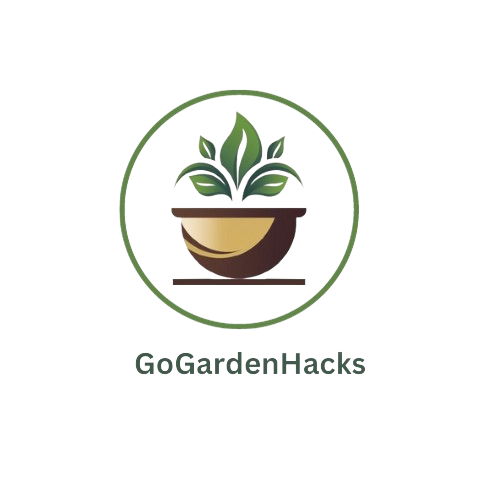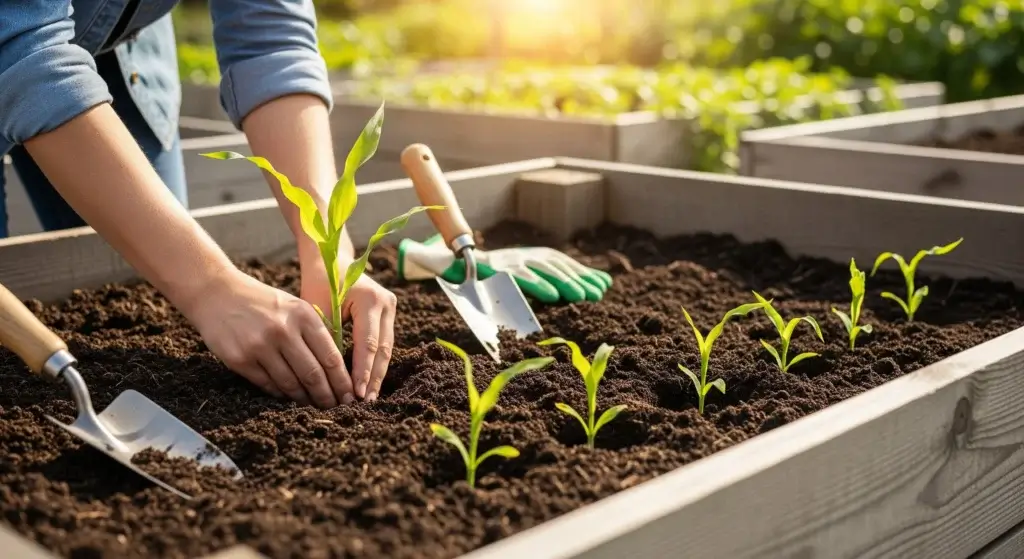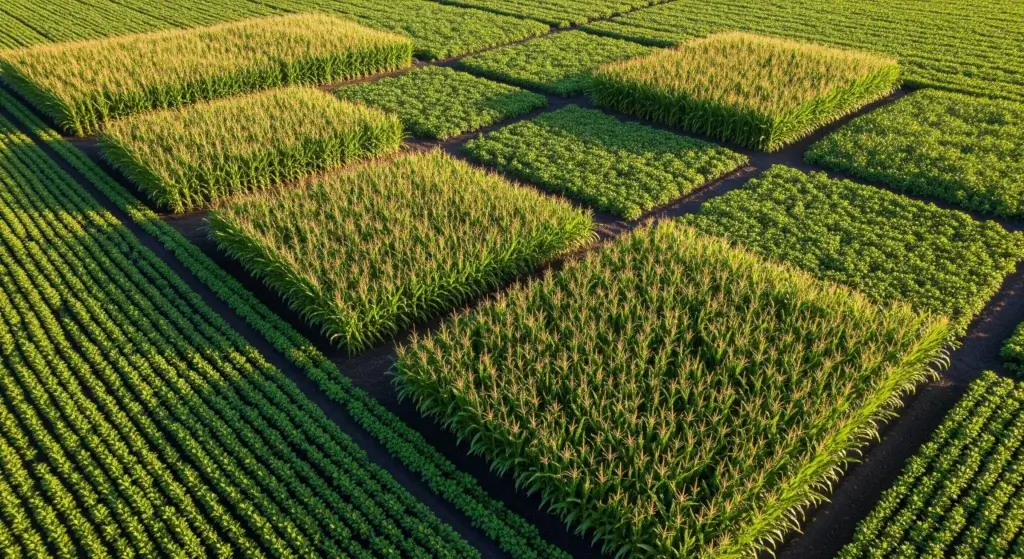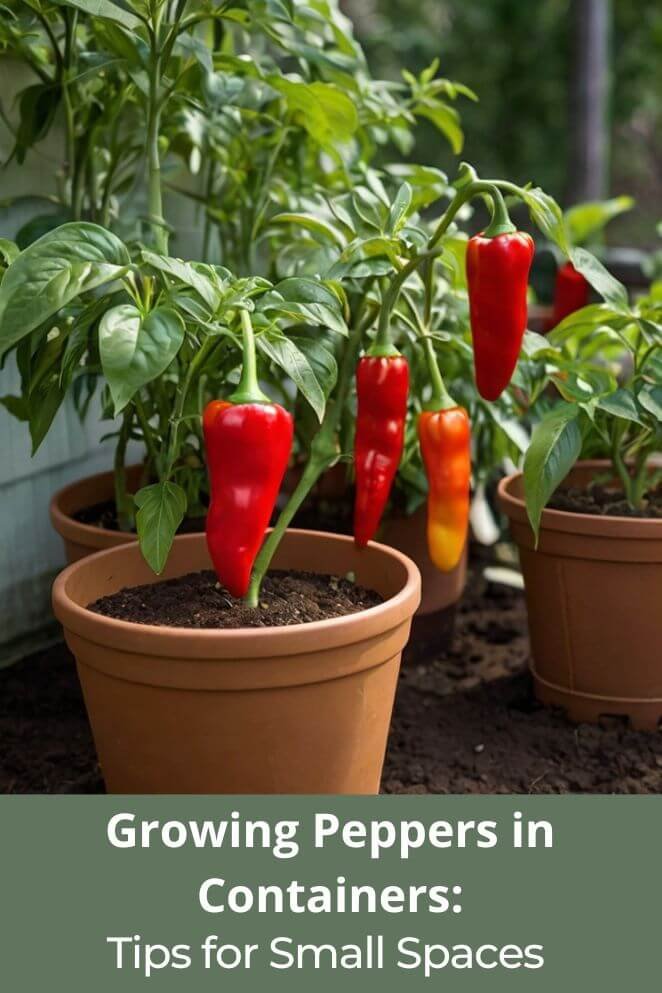
Urban gardening is having its main-character moment—and peppers are totally stealing the show.
Whether you’re working with a cozy balcony, a sun-soaked patio, or that one windowsill that gets all the good light, container gardening is proof you don’t need a backyard to grow your own bounty.
Peppers are the Beyoncé of the veggie world—colorful, versatile, and always bringing the heat.
They’re low-maintenance divas that thrive in pots, making them perfect for city dwellers who want to add some homegrown flair to their meals.
Ready to turn your small space into a pepper paradise? Let’s get growing!
Why Choose Container Gardening for Peppers?
Here’s why container gardening is a total game-changer (especially for all of us working with balconies instead of backyards):
Space efficiency
Got a balcony, a windowsill, or that tiny slice of patio heaven? Perfect.
Peppers are compact enough to thrive in containers, making them ideal for city slickers who want to grow their own hot (or sweet) stuff without needing a full-on farm.
Urban jungles just got a little more delicious.
Mobility = sun chasing like a pro
Containers let you play musical chairs with your plants.
Didn’t get enough sun in the morning?
No worries—just scoot the pot over and let those leaves soak up the rays.
Think of it like your plant’s personal sunbathing schedule. Bonus: you’ll also protect them from sudden storms or chilly drafts with a quick relocation.
Soil control = No more mystery mixes
When you grow in containers, you get to choose the soil.
No weird surprises, no compacted dirt, and definitely fewer drama-filled fungal episodes.
You’re creating a designer growing medium—rich, well-draining, and totally customized for those pepper roots.
Bye-bye, creepy crawlies
While we love all things nature, some pests just aren’t invited to the pepper party.
Elevated pots help keep certain ground-dwelling bugs away.
And since you’re working in a smaller space, spotting and stopping invaders becomes way easier.
It’s like setting up VIP security for your chili babies.
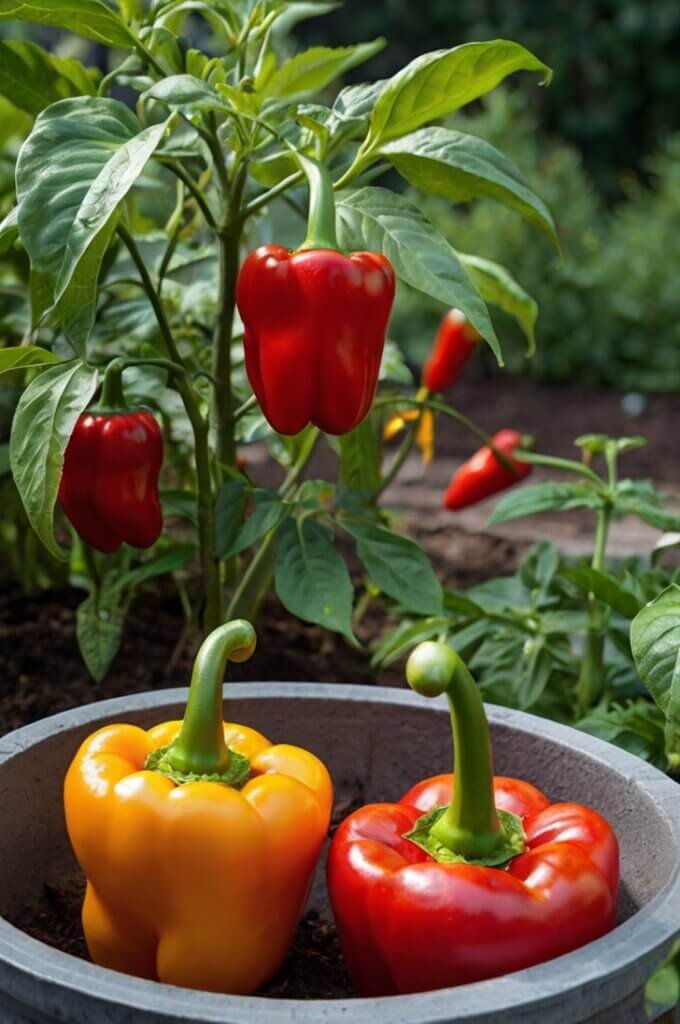
Choosing the Appropriate Containers
Choosing the right container is like casting the lead role in your pepper-growing rom-com.
It’s gotta be the perfect mix of size, style, and drainage smarts.
Let’s break it down:
Size
Peppers aren’t exactly divas, but they do need their space.
You’ll want a pot that holds at least 3 to 5 gallons of soil per plant.
Anything smaller, and your plant’s roots are gonna feel like they’re crammed into coach on a budget airline.
Larger containers mean more room for root development, better moisture retention, and ultimately—more peppers.
And let’s be honest, more peppers = more salsa, and who doesn’t want that?
Material
Plastic? Great for holding moisture and super lightweight—perfect if you like to rearrange your garden like a living room.
Ceramic? Chic and stable, but be ready to flex those muscles when moving day comes around.
Fabric grow bags? Surprisingly awesome.
They breathe well, drain like a dream, and fold up when the season’s done—kind of like pepper plant athleisure wear.
The key? Whatever material you choose, make sure it has drainage holes. That brings us to…
Drainage
Drainage isn’t just a “nice to have”—it’s an absolute must.
Without proper drainage, your pot turns into a swampy mess, and pepper roots hate soggy feet.
No one wants root rot crashing the party.
Check for holes at the bottom (and maybe even add a few extras if needed).
Pro tip: pop some gravel or broken terracotta shards at the bottom to keep things flowing smoothly.
Planting Your Peppers: Step-by-Step Instructions
From seeds
- Start indoors early – Start seeds indoors 8–10 weeks before your last expected frost date. Use a seed-starting mix in trays or small pots.
- Heat and Light – Pepper seeds are divas. They want warmth (think 75–85°F) and bright light. Use a heat mat under your trays and place them under grow lights for 12–16 hours a day.
- Keep it moist, not soaked – Think of it like baking a perfect cake—too dry or too soggy and it’s ruined. Keep the soil lightly moist with a spray bottle.
- Be patient, grasshopper – Pepper seeds can take their sweet time. Some germinate in a week, others in three. Don’t panic, don’t overwater, and don’t threaten them (they don’t respond well to passive-aggression).
- Thin the herd – Once your seedlings have two sets of true leaves, thin them out. Keep the strongest-looking sprout per pot.
- Harden off before transplanting – Before you toss them outside, let them acclimate gradually to the harsh realities of the outside world. Put them outdoors for a few hours a day, increasing over a week.
From seedlings
- Wait for warmth – Don’t even think about planting your pepper babies outside until nighttime temps are consistently above 55°F.
- Pick a sunny spot – Peppers crave sunshine. At least 6–8 hours of full sun daily. They’re basically solar-powered flavor machines.
- Prep the soil like a boss – Work compost or aged manure into your garden bed or container. Peppers love loose, well-draining soil with a side of organic nutrients.
- Give them space to shine – Space plants about 18–24 inches apart. Crowding = poor airflow = drama (aka pests and disease). Let them stretch out and do their thing.
- Plant deep and water well – Bury them up to their first set of leaves and water thoroughly. They need that strong start—like Batman’s origin story but with fewer bats.
- Mulch & support – Add mulch to keep the soil moist and the roots chill. If you’re growing big fruiters, give them stakes or cages.
- Keep the love coming – Water consistently (about 1–2 inches per week), feed with an all-purpose or tomato fertilizer every few weeks, and watch them grow.
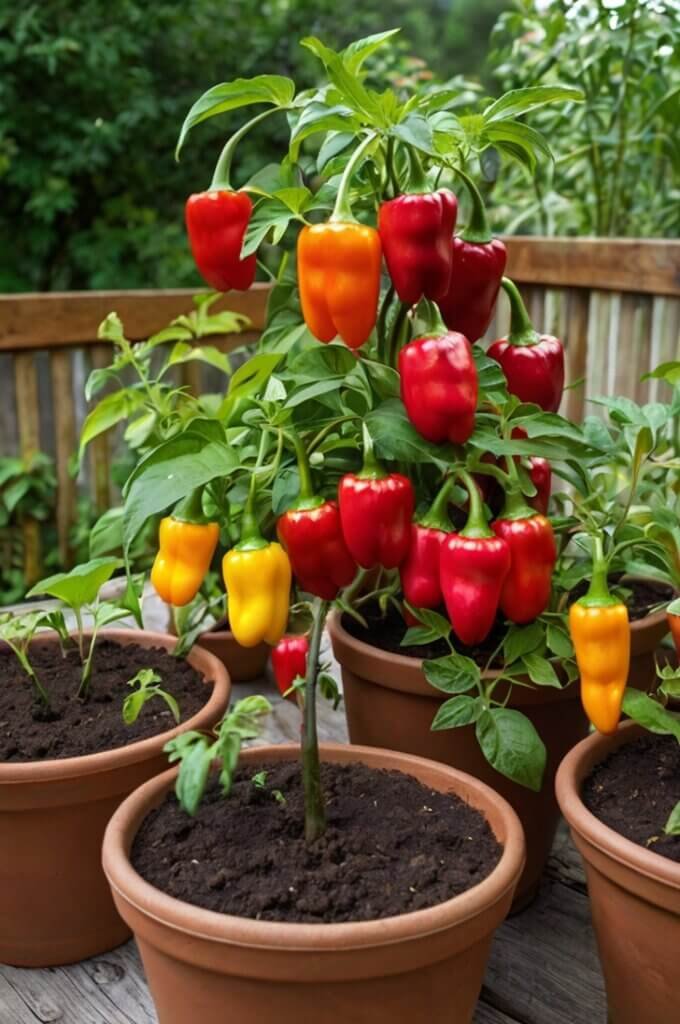
Keeping Your Peppers Happy – Simple Care Tips
Watering
Peppers love consistency—especially when it comes to water.
Aim for about 1–2 inches per week, depending on weather.
Water deeply, not just a little sprinkle.
You’re trying to hydrate the roots, not just make the soil look damp for the ‘Gram.
Sunlight
Peppers are total sun worshippers. Give them 6–8 hours of full sunlight a day, minimum.
If they were human, they’d be laying poolside with sunglasses and a margarita.
Feeding (fertilizing)
Use a balanced fertilizer early on (something like 10-10-10), then switch to a low-nitrogen, high-potassium blend once they start flowering and fruiting.
Too much nitrogen = big leaves, no peppers. And no one came here for just foliage.
Feed every 2–3 weeks during the growing season.
It’s like sending snacks to summer camp—keeps the energy up and the complaints down.
Supporting your plants
Some pepper plants—especially the big bell types or heavy producers—need help staying upright.
Think of it like giving your plant a gym buddy.
- Use tomato cages, bamboo stakes, or even a funky DIY trellis. Just something to keep the stems from snapping under all that success (and fruit).
- Tie loosely with soft twine or plant clips—no zip ties, unless your plant enjoys bondage. (No judgment, but probably not ideal.)
Dealing with pests (bugs)
Even the best pepper plants attract a few freeloaders.
Aphids, spider mites, and cutworms might show up like uninvited guests at a backyard BBQ.
- Inspect regularly—under leaves, around stems. If something looks weird, zoom in like you’re analyzing clues on CSI: Garden Edition.
- Spray with neem oil or insecticidal soap if things get buggy. You can also invite in some beneficial insects—ladybugs and lacewings are like the bouncers of the garden world.
- Keep your garden clean (no plant debris, no soggy soil) to cut down on pest hideouts. It’s like pest-proofing your plant’s apartment.
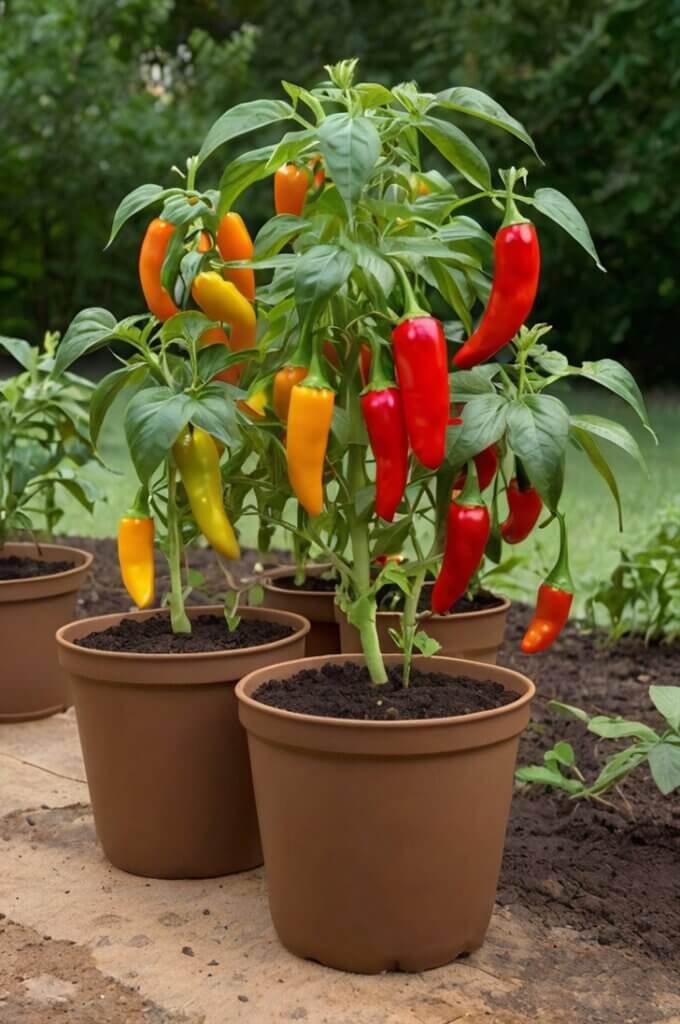
Conclusion: Big Flavor, Small Space
Growing peppers in containers isn’t just practical—it’s downright genius, especially if you’re rocking a balcony, patio, or just a few spare feet of sunshine.
With the right pepper variety, a solid container, and some TLC, you’ll be harvesting your own spicy (or sweet) stash in no time.
It’s proof that you don’t need a sprawling backyard to grow incredible food—you just need a pot, a plan, and maybe a little patience.
Seriously, it’s like turning your windowsill or porch into a mini farmer’s market.
So go ahead—embrace the magic of container gardening.
Channel your inner plant parent, get your hands dirty (in the good way), and enjoy those fresh, flavorful peppers like the garden rockstar you are.
